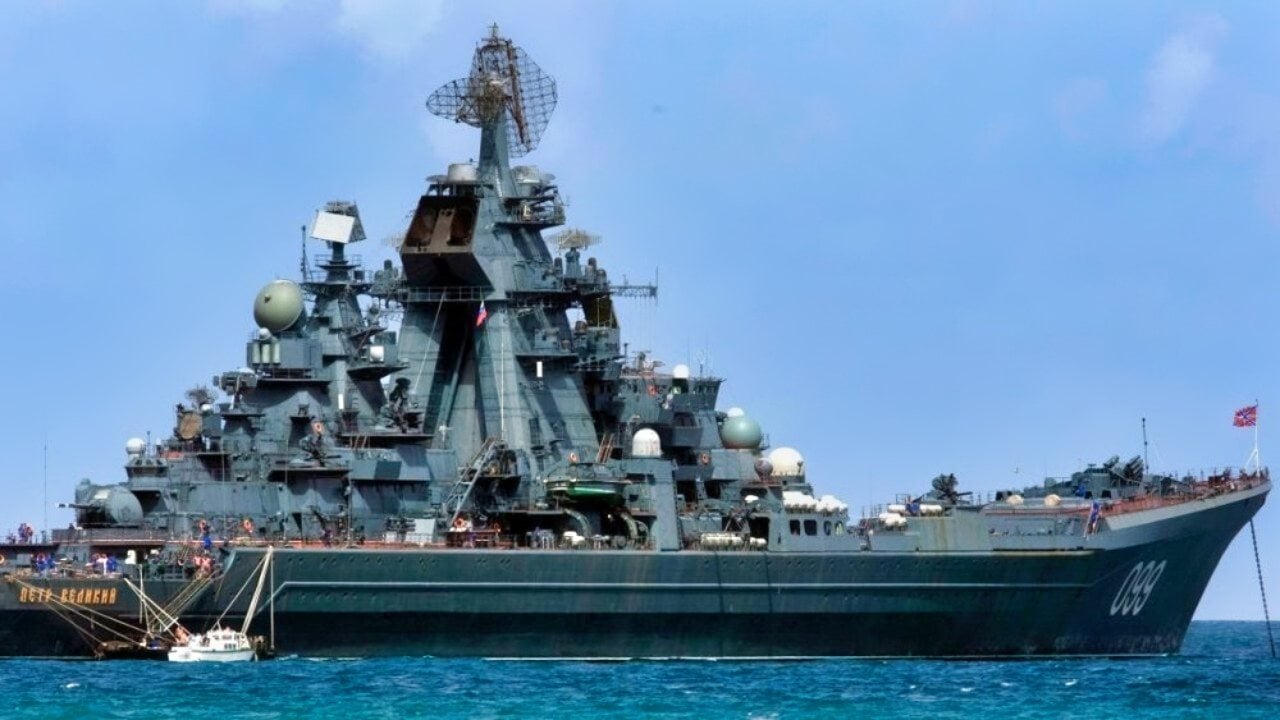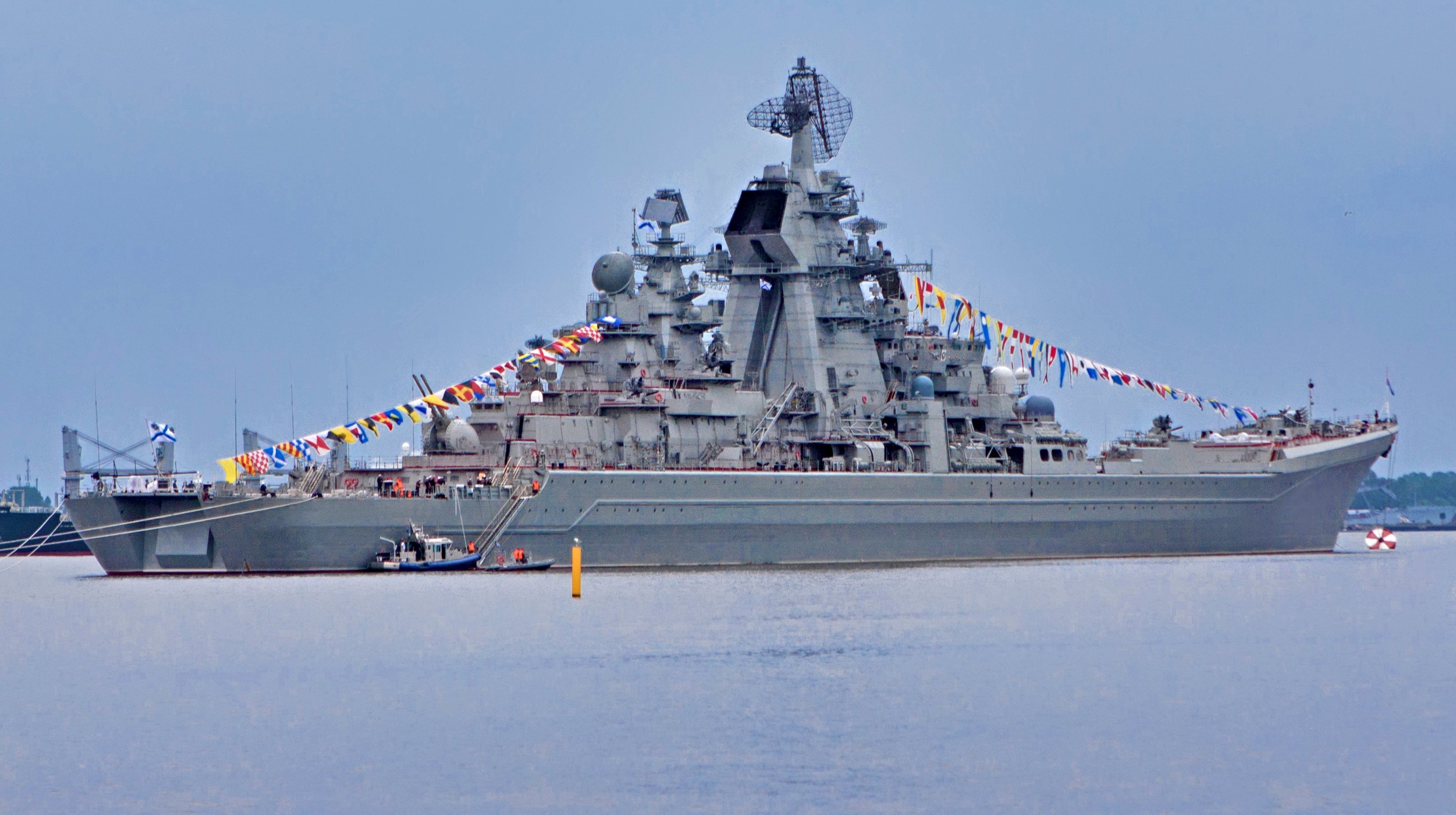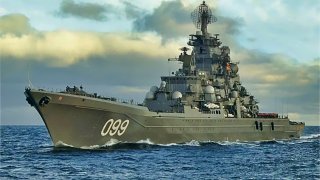Kirov: Russia Built Nuclear Battlecruisers for 1 Reason Only
The Kirov-class nuclear-powered guided-missile battlecruisers, built for the Soviet and later Russian Navy, are the largest and heaviest surface combatants currently in operation.
Why You Need to Know: The Kirov-class nuclear-powered guided-missile battlecruisers, built for the Soviet and later Russian Navy, are the largest and heaviest surface combatants currently in operation. Designed to counter U.S. Navy submarines and carrier strike groups, these warships boast extensive weaponry, including 130 mm AK-130 guns, SS-N-19 anti-ship missiles, multiple surface-to-air missile systems (SA-N-4 and SA-N-9), and 533 mm torpedo tubes.

-Powered by nuclear reactors, the Kirov-class offers unparalleled autonomy and endurance, with a range of 14,000 nautical miles at 30 knots.
-Initially developed during the Cold War to assert naval dominance and disrupt U.S. supply lines, the Kirov-class remains a formidable force on the high seas, balancing firepower and strategic versatility.
Inside Russia’s Kirov-Class Battlecruisers: The World’s Largest Surface Warships
The Kirov is a class of nuclear-powered guided-missile battlecruisers built for the Soviet Navy and later operated by the Russian Navy. These warships are considered to be the largest and heaviest surface combatants in operation in the world today.
The Kirov class was designed to counter the U.S. Navy’s submarines with its large payload of SS-N-14 anti-submarine missiles, and later to counter U.S. carrier strike groups.
The Kirov class is powered by nuclear reactors, which provide a high degree of autonomy and endurance in comparison with conventionally powered warships. Their nuclear reactors enable the warships to operate for extended periods at sea without refueling.
The Specs on the Kirov-Class
The Kirov class is equipped with an array of weapons systems, including a 130 mm AK-130 twin-barrel gun used for surface and air targets. SS-N-19 Shipwreck long-range anti-ship missiles are deployed. Twenty of these missiles can be launched from the ship.
Twelve eight-round Vertical Launch Systems are installed for these new missiles.
Two main launchers that pop off SA-N-4 surface-to-air missiles are positioned on the bridge, with a total of forty missiles.

Further, SA-N-9 surface-to-air missiles are loaded on the Kirov-class, with two octuple launchers installed at the forward deck, carrying an additional 16 missiles.
Not content with creating a giant missile truck at sea, the Russians installed 533 mm torpedo tubes on the Kirov class. Specifically, two quintuple launchers were installed at the hull, capable of launching Type 53 torpedoes and SS-N-15 missiles.
A single RBU-1200 is positioned on the forward deck while two RBU-1000s are located at the aft deck.
Oh, and then there’s the potent CADS-N-1 CIWS (Close-In Weapon System) armed with SA-N-11 missiles. Six of these CIWS are installed on the boat’s superstructure, giving it potent defenses against incoming fire.
The Kirov-class battlecruiser has a range of approximately 14,000 nautical miles at a speed of 30 knots.
The Reason for the Battlecruiser
Back in the Cold War, the Reds built the Kirov-class warships primarily to counter the U.S. Navy’s carrier battle groups and to assert naval power. The battlecruisers were designed to engage with and neutralize American aircraft carriers, which were considered the backbone of the U.S. Navy’s offensive capabilities.

Additionally, the Kirov-class ships were intended to serve as commerce raiders, disrupting the flow of American and Canadian ground reinforcements to Europe in the event of a conflict.
The Kirov-class battlecruiser is a powerful warship designed to project Soviet/Russian naval power and to counter U.S. naval forces. Its nuclear propulsion, long-range missiles, and extensive weapons systems make the Kirov a force on the high seas.
They were built to counter the U.S. Navy’s aircraft carrier capabilities without replicating that expensive ability. It was, in fact, a smart stopgap for a nation, like Russia, that is not a conventional maritime power but will still need to hold the line at sea against any U.S. naval force.
Author Experience and Expertise: Brandon J. Weichert
Brandon J. Weichert, a National Interest national security analyst, is a former Congressional staffer and geopolitical analyst who is a contributor at The Washington Times, the Asia Times, and The-Pipeline. He is the author of Winning Space: How America Remains a Superpower, Biohacked: China’s Race to Control Life, and The Shadow War: Iran’s Quest for Supremacy. His next book, A Disaster of Our Own Making: How the West Lost Ukraine, is due October 22 from Encounter Books. Weichert can be followed via Twitter @WeTheBrandon.
All images are Creative Commons or Shutterstock.
From the Vault
Russia Freaked Out: Why the U.S. Navy 'Unretired' the Iowa-Class Battleships
Battleship vs. Battlecruiser: Iowa-Class vs. Russia's Kirov-Class (Who Wins?)


